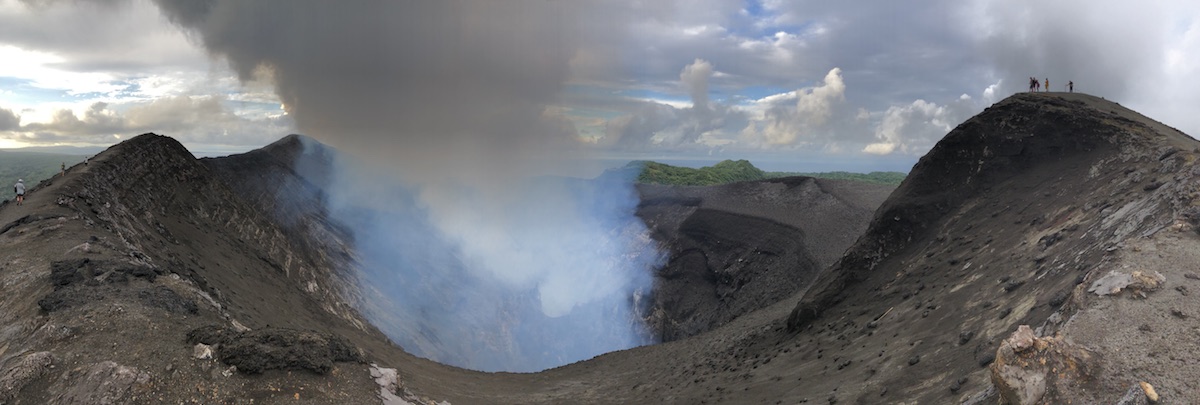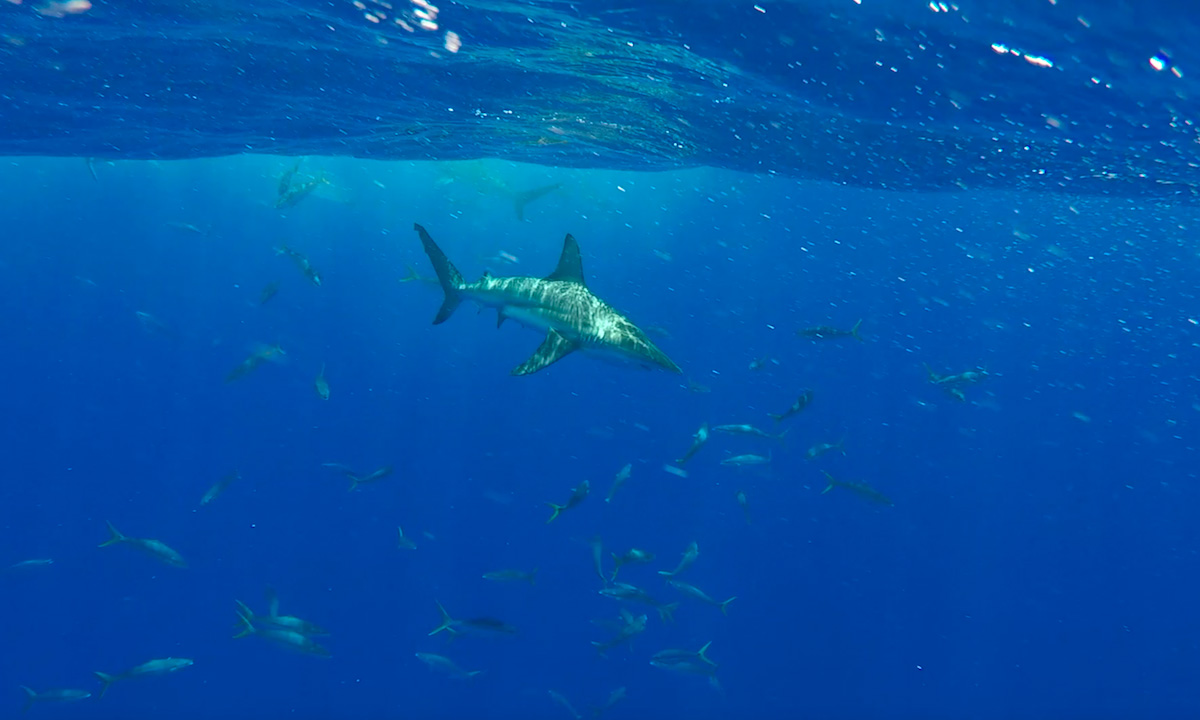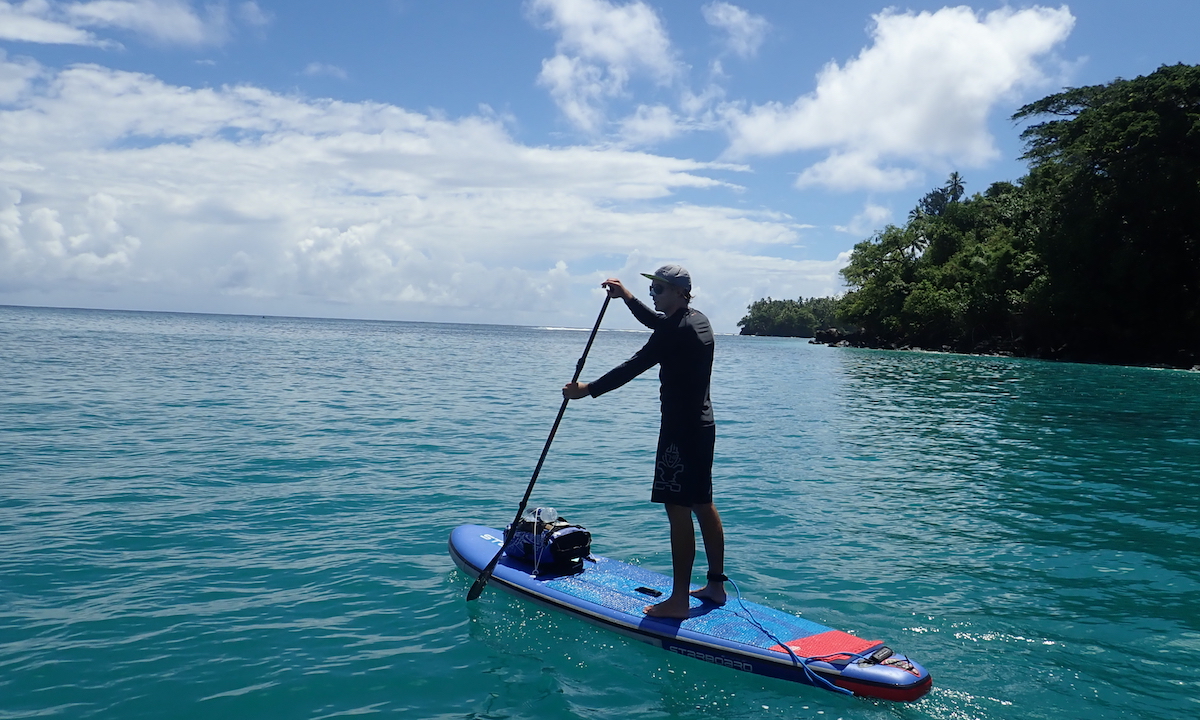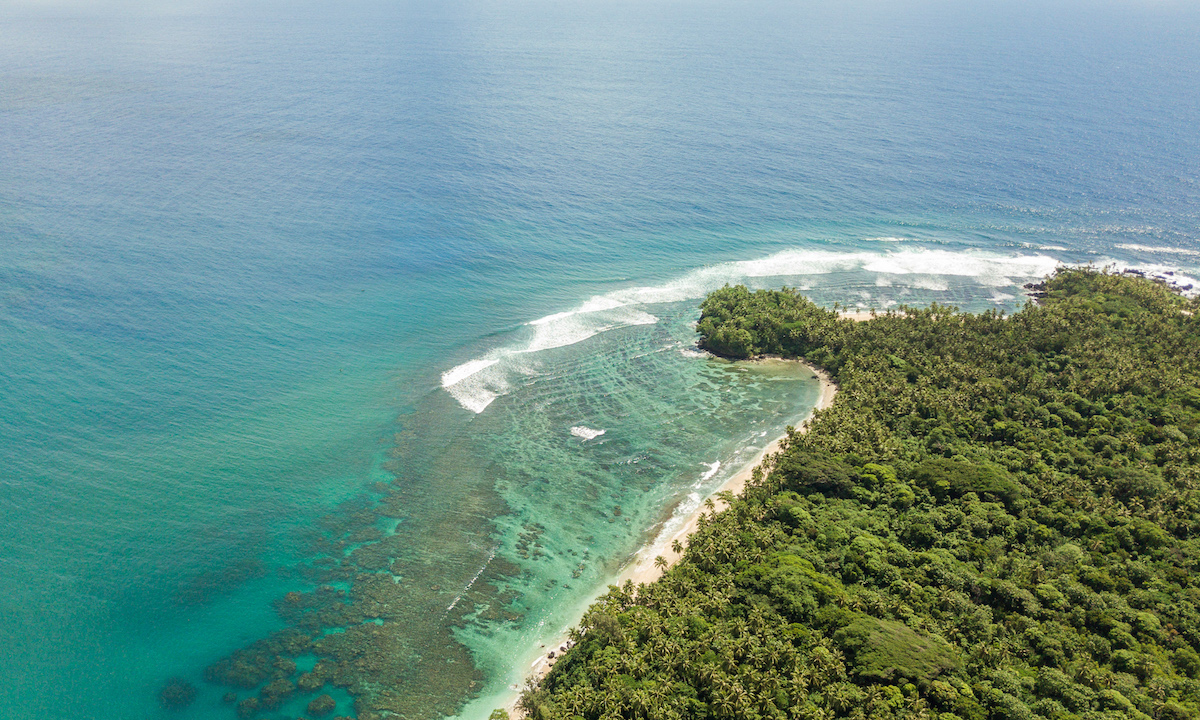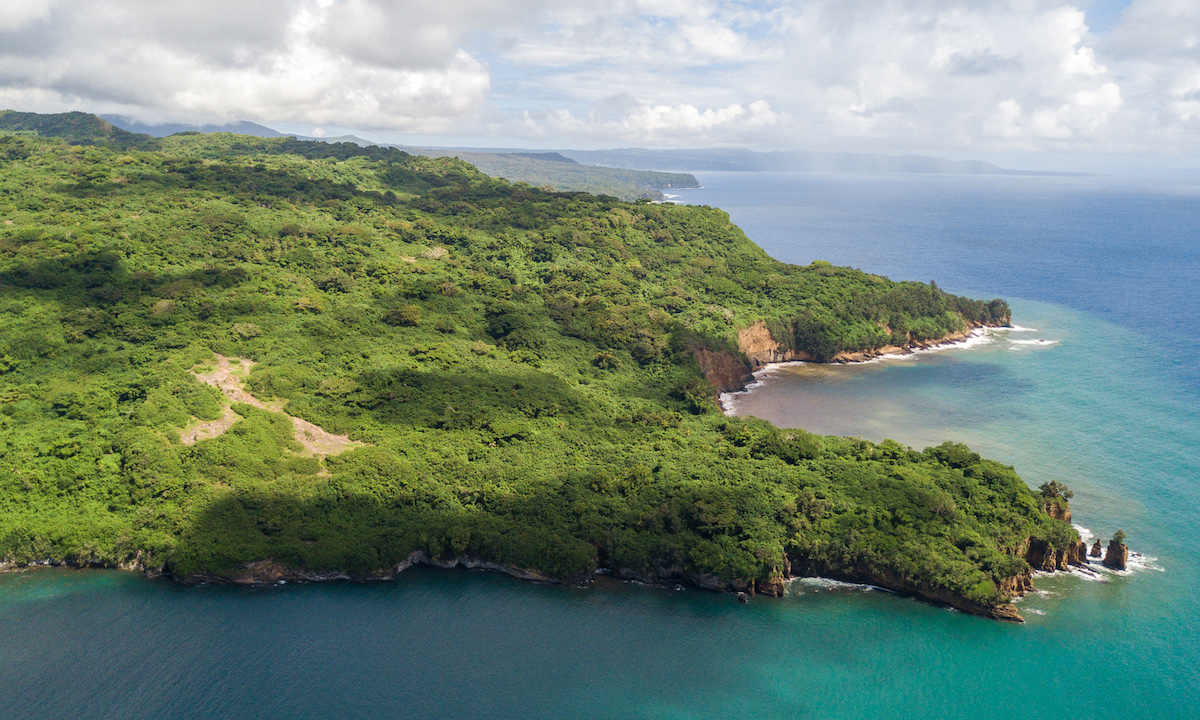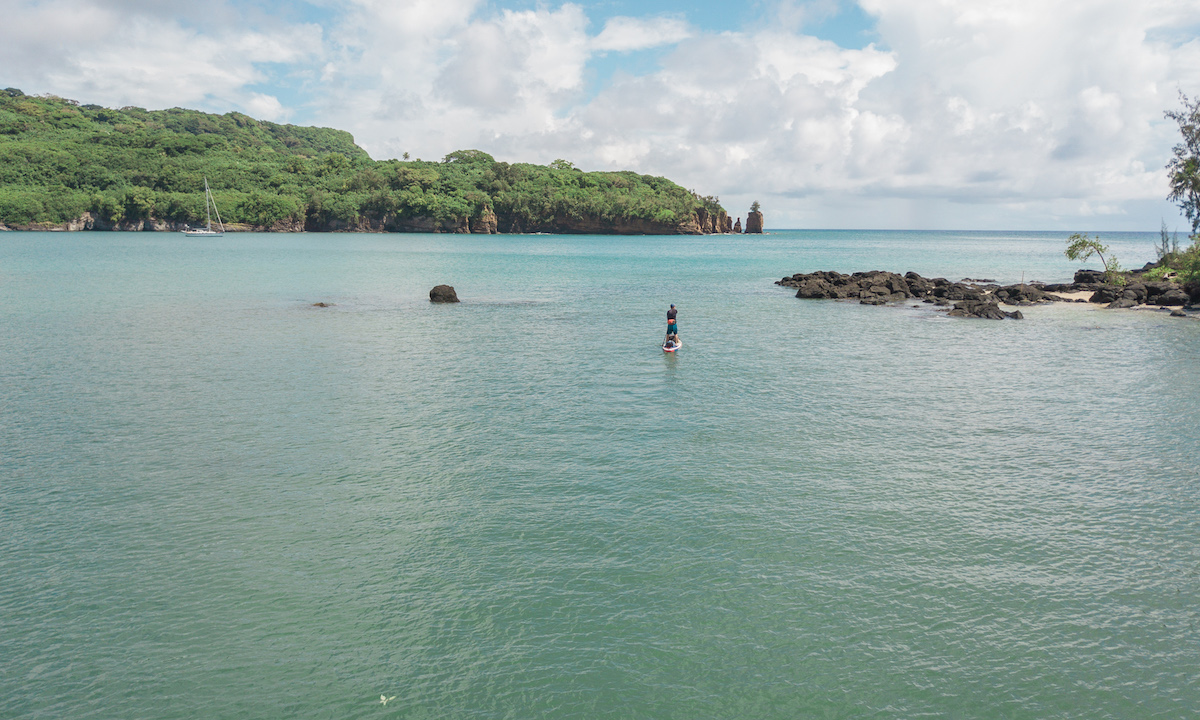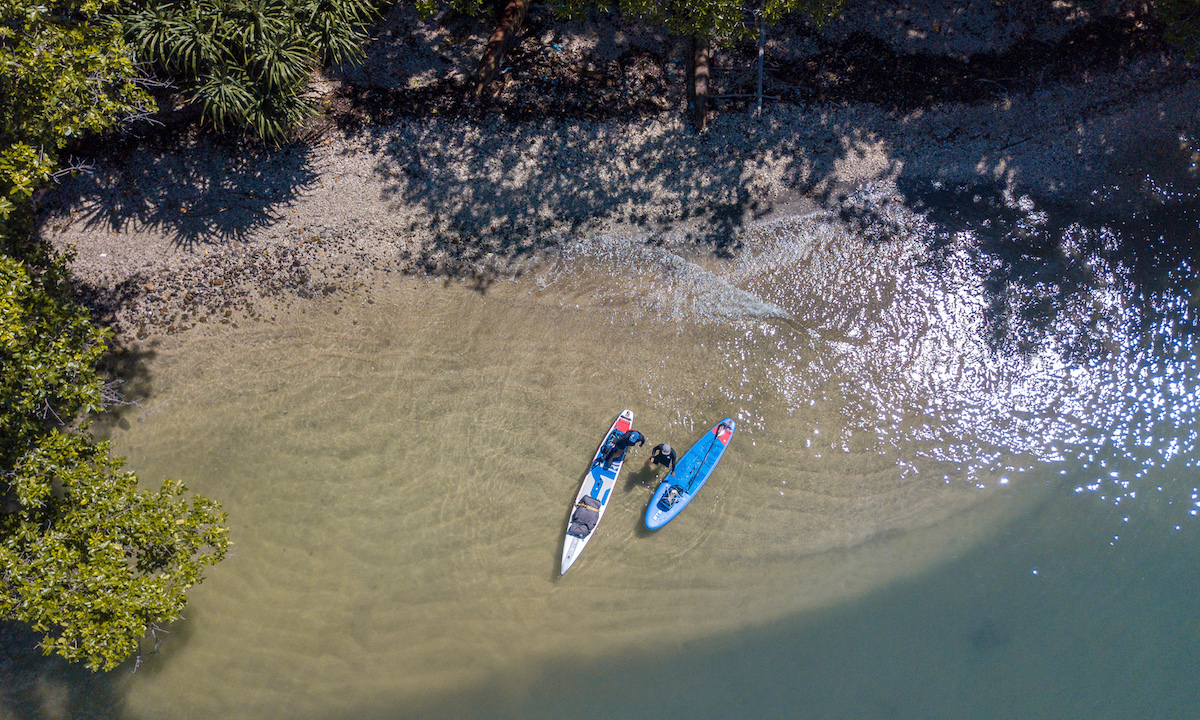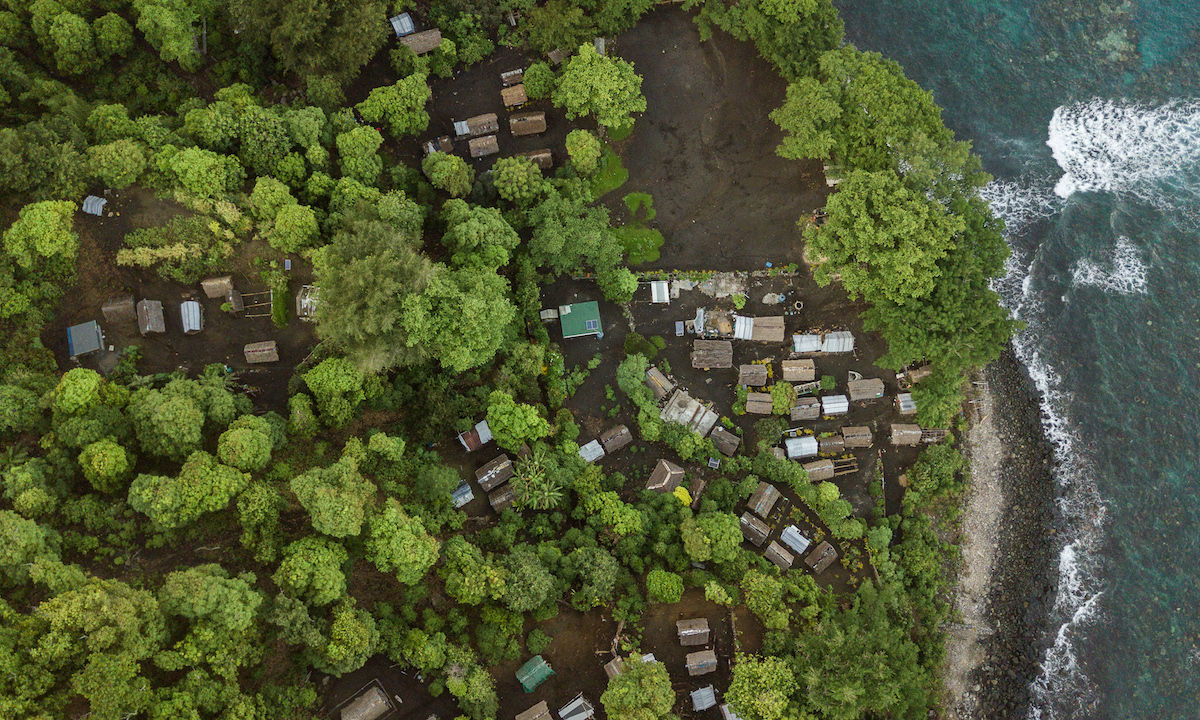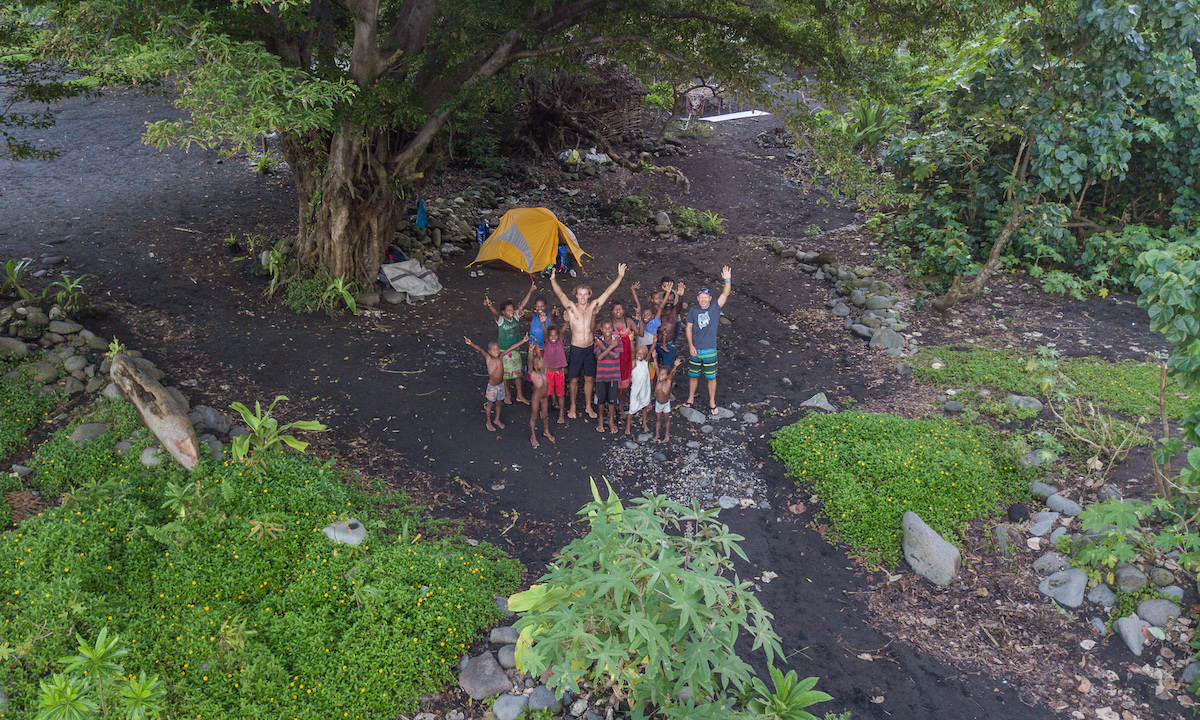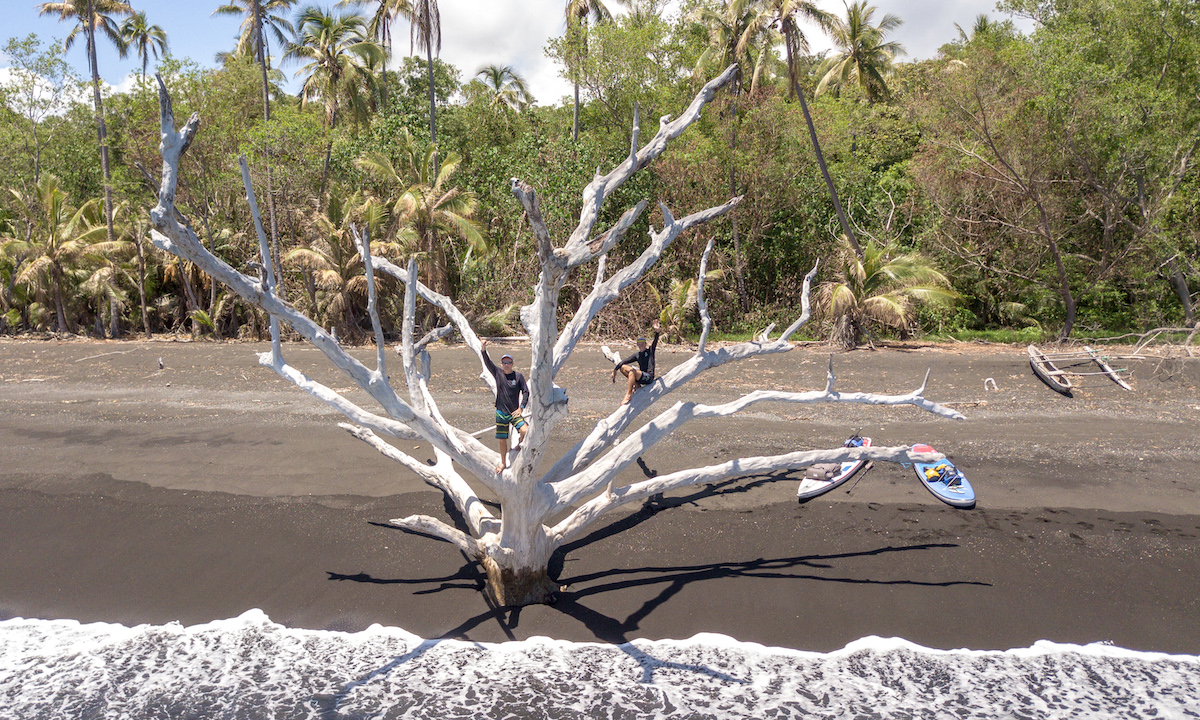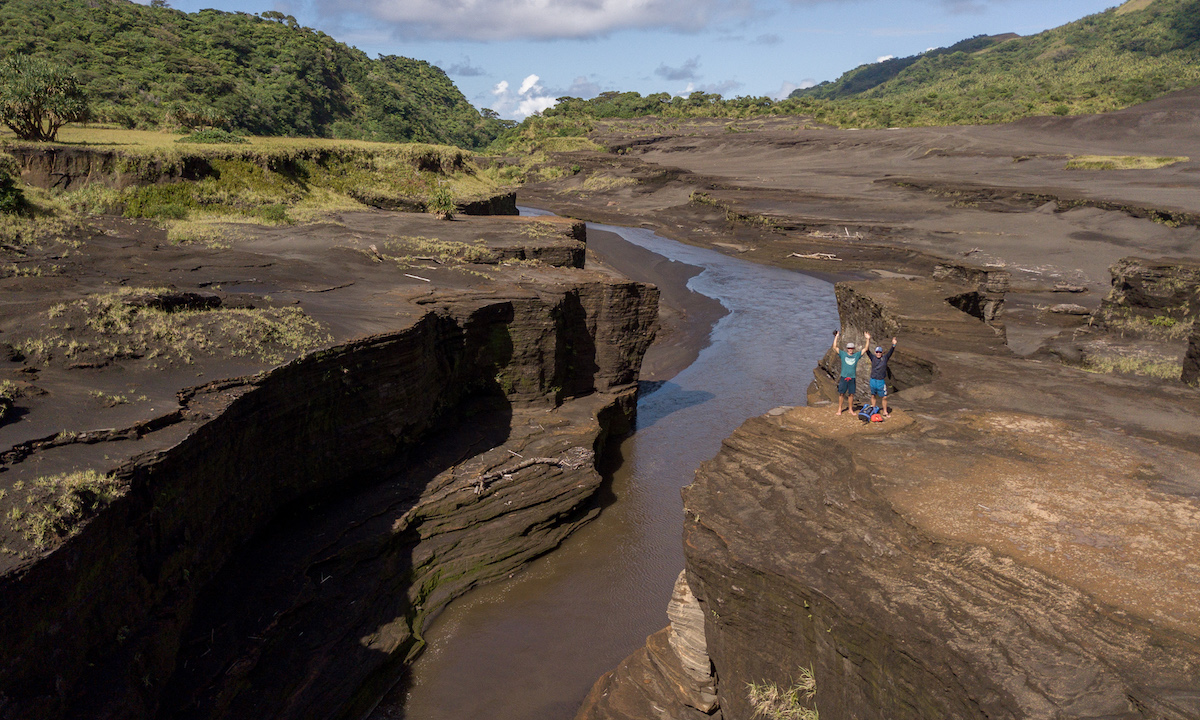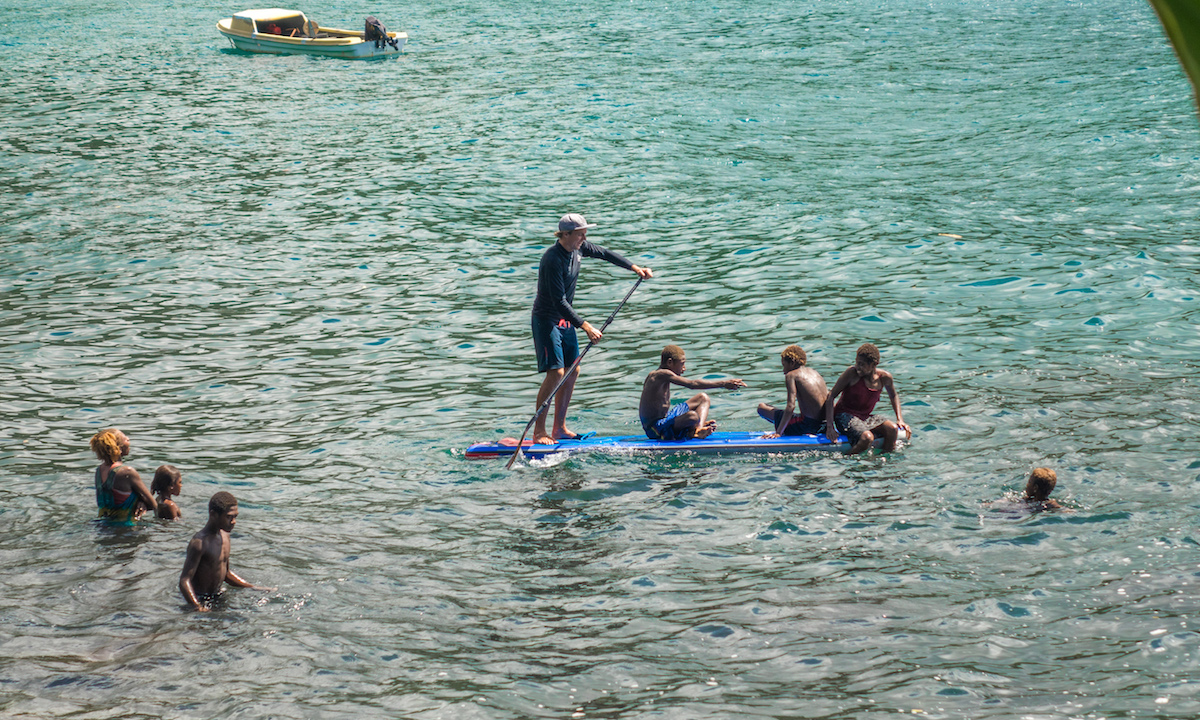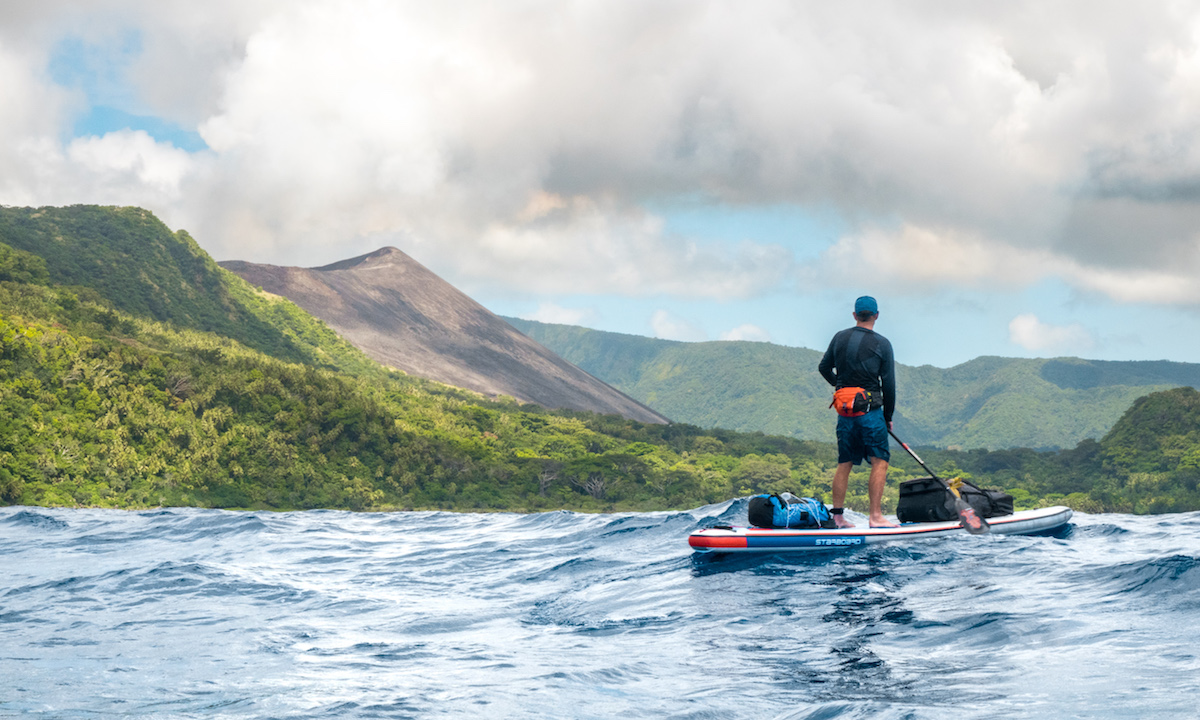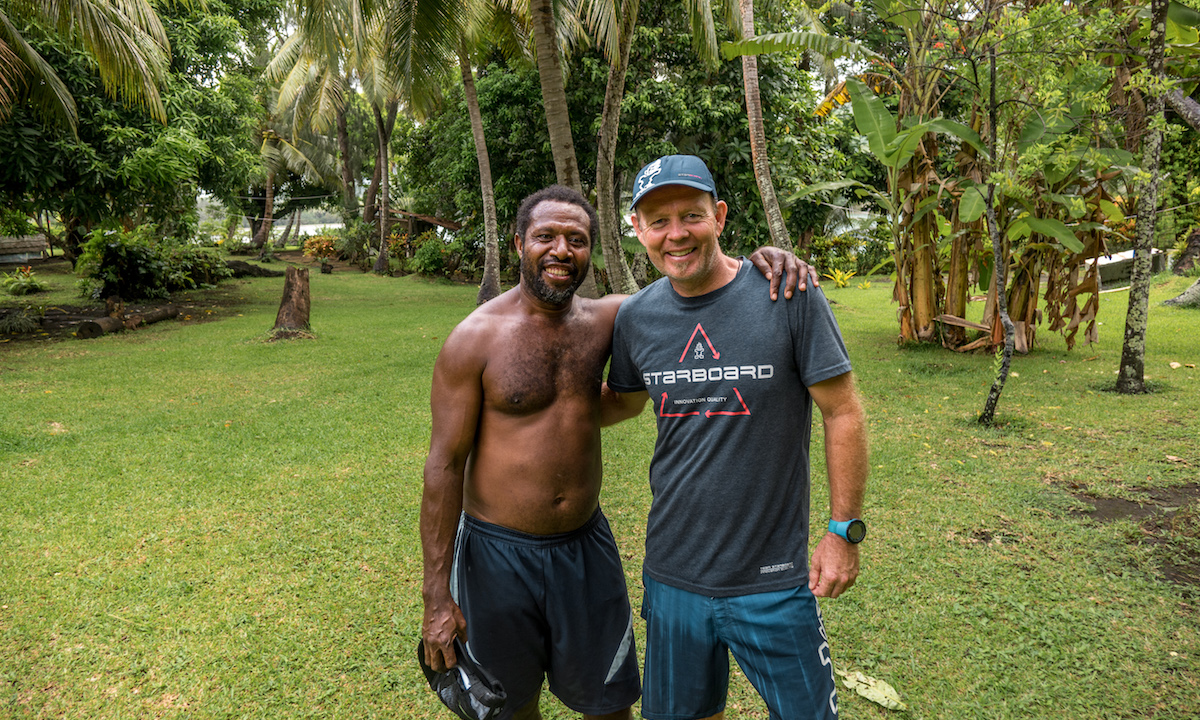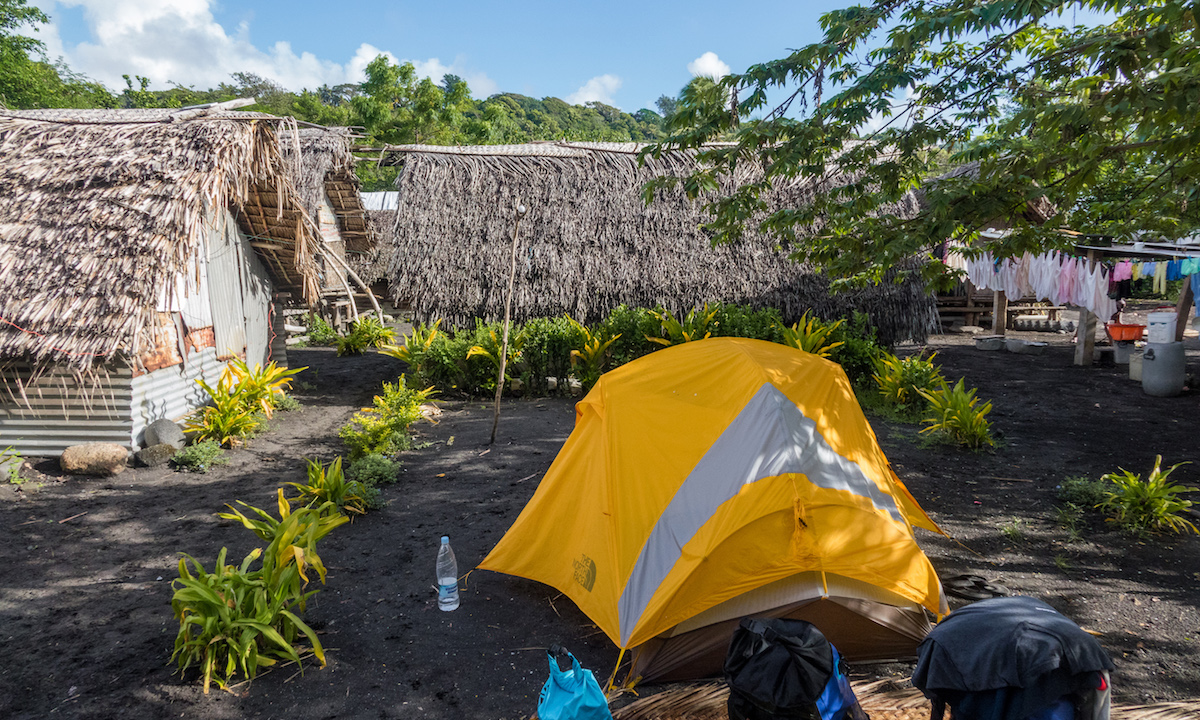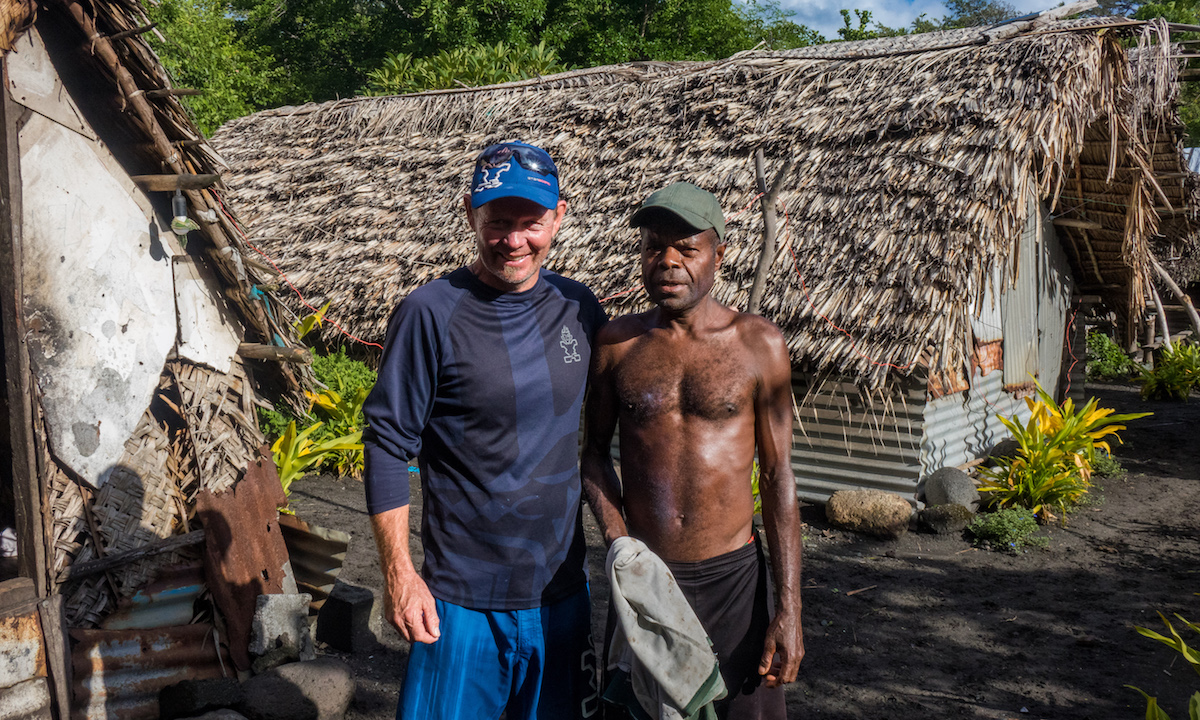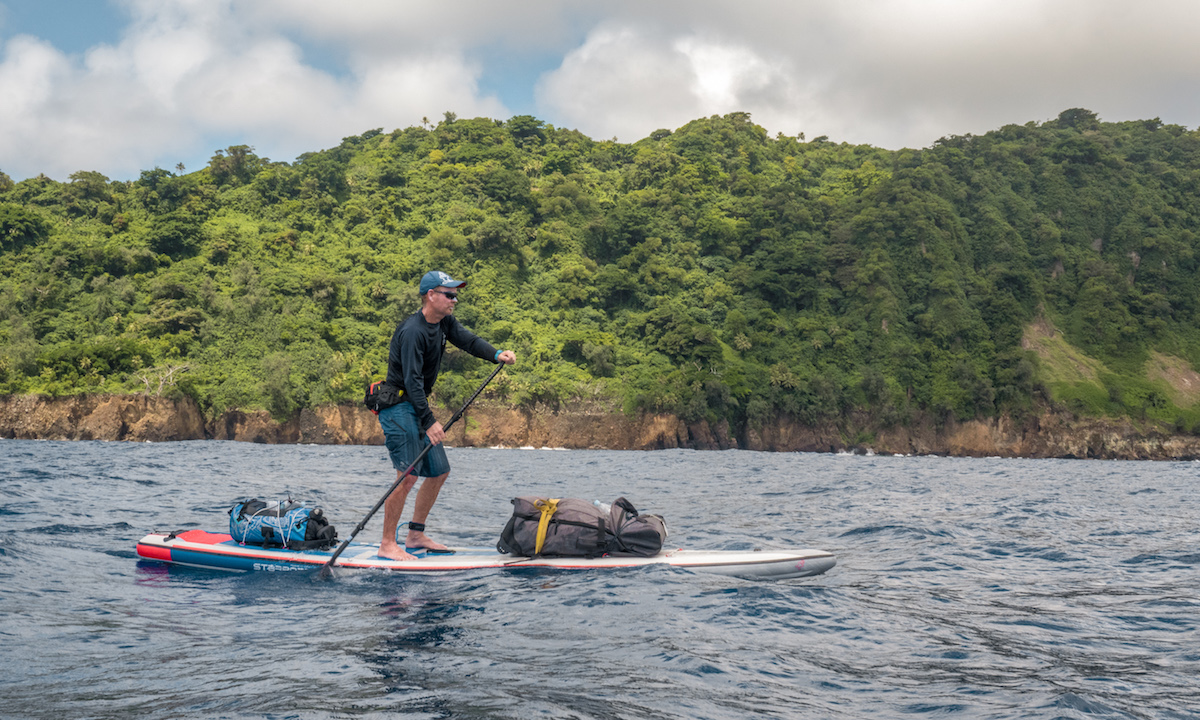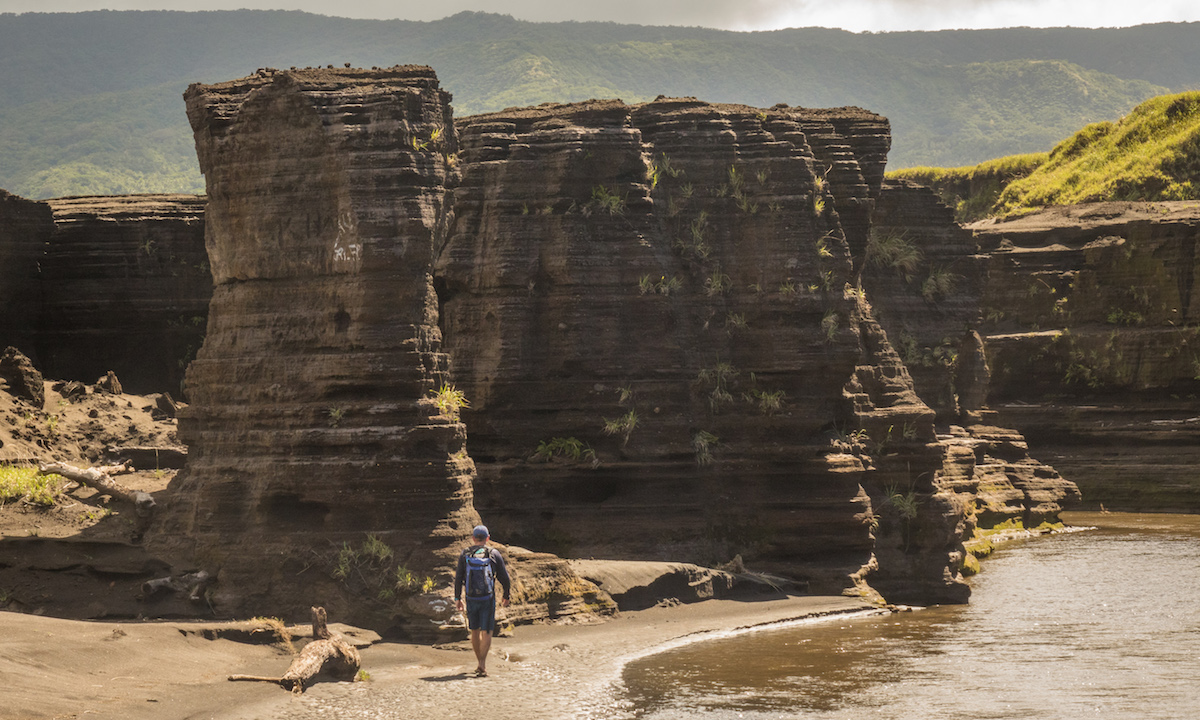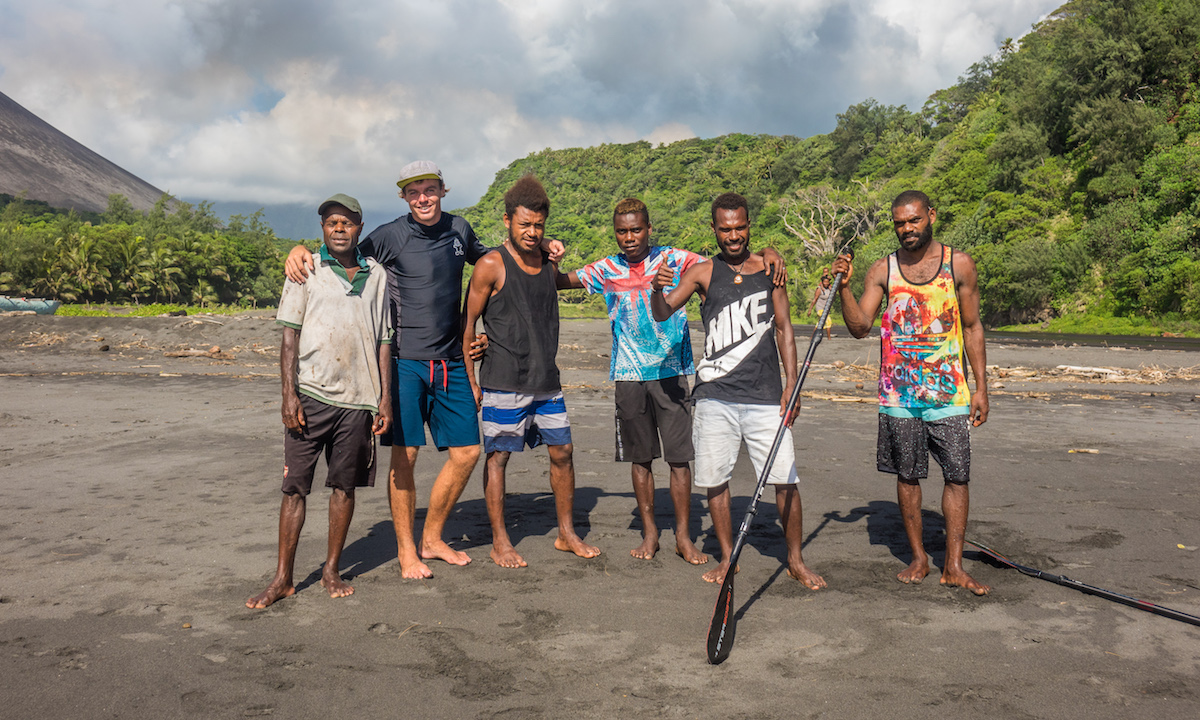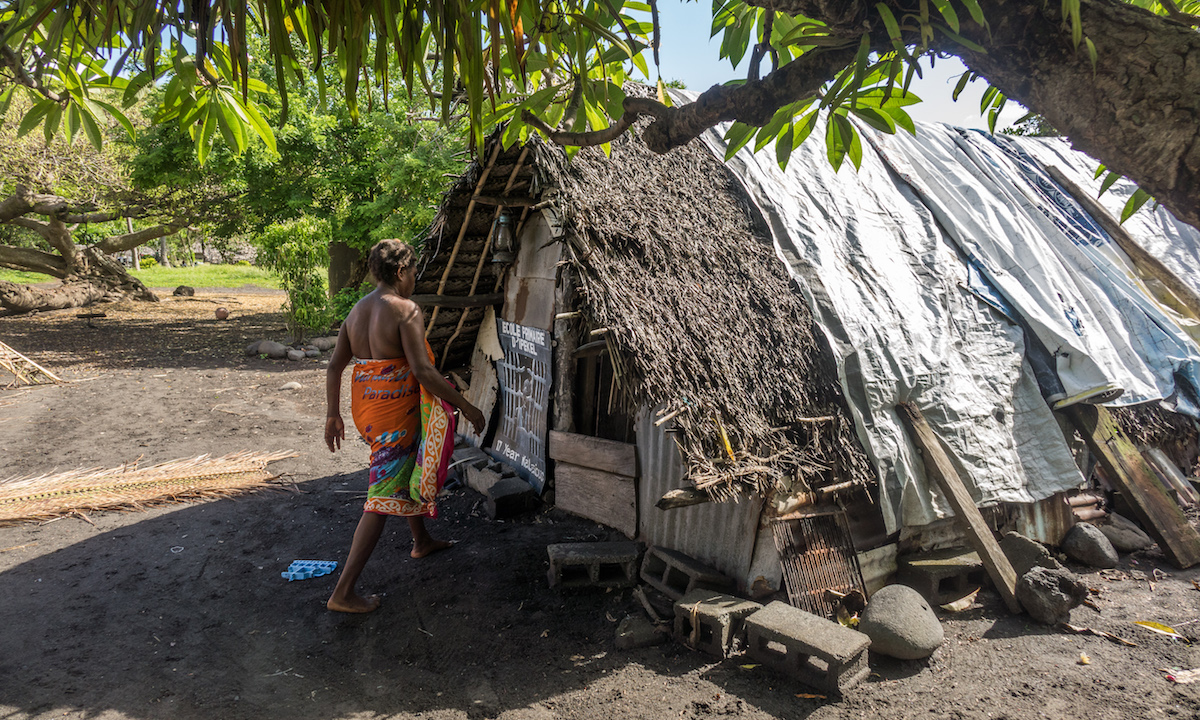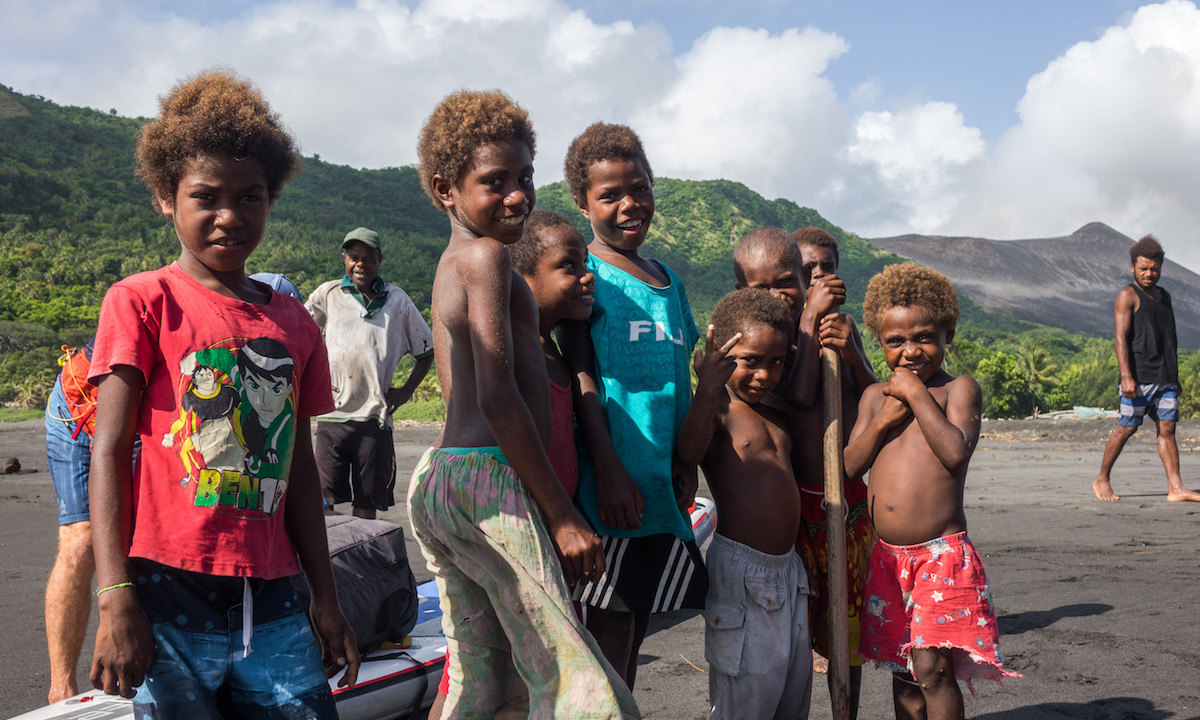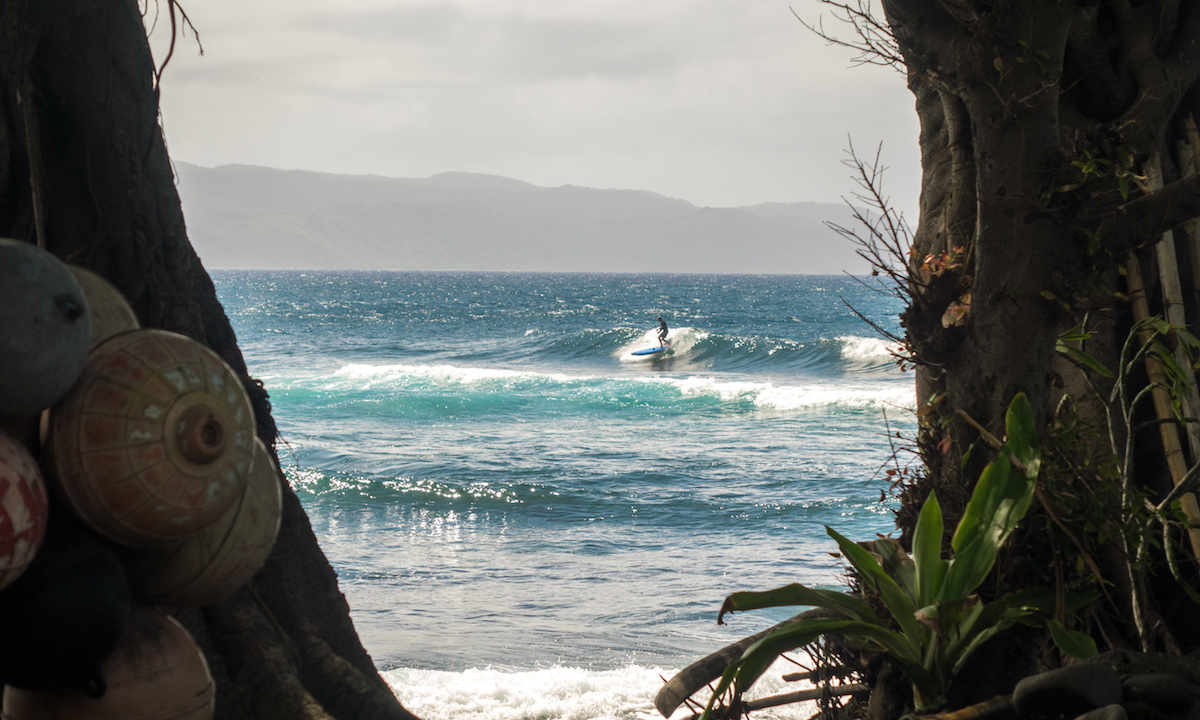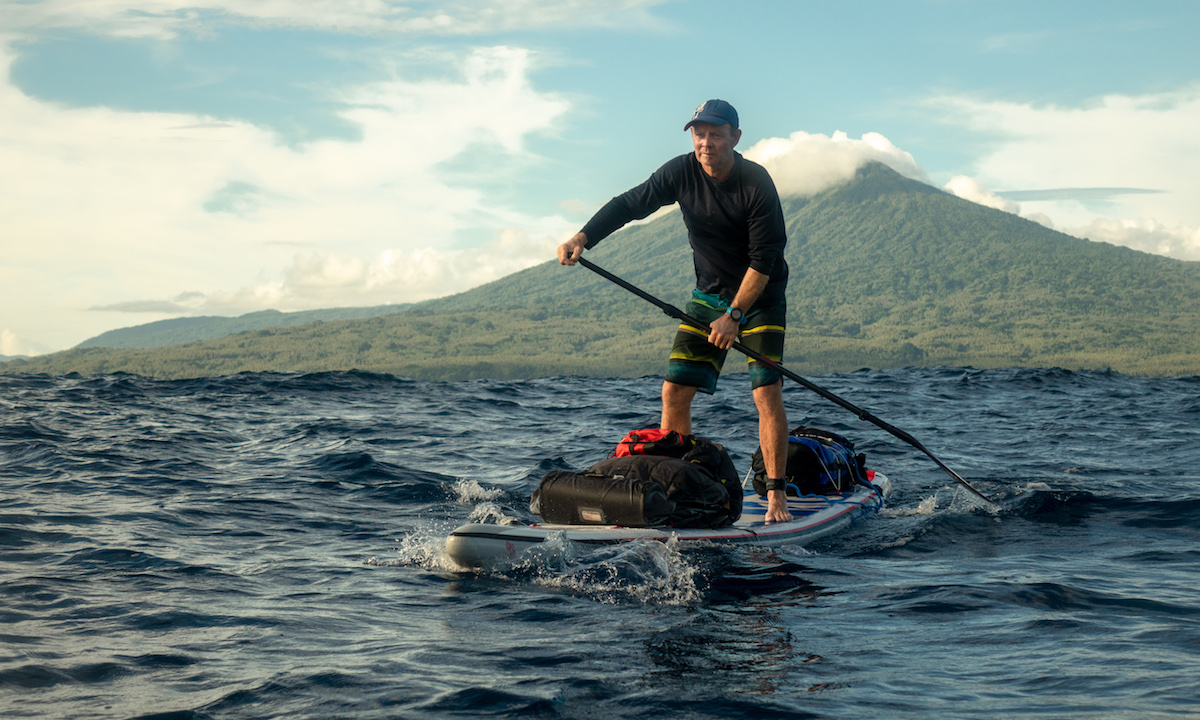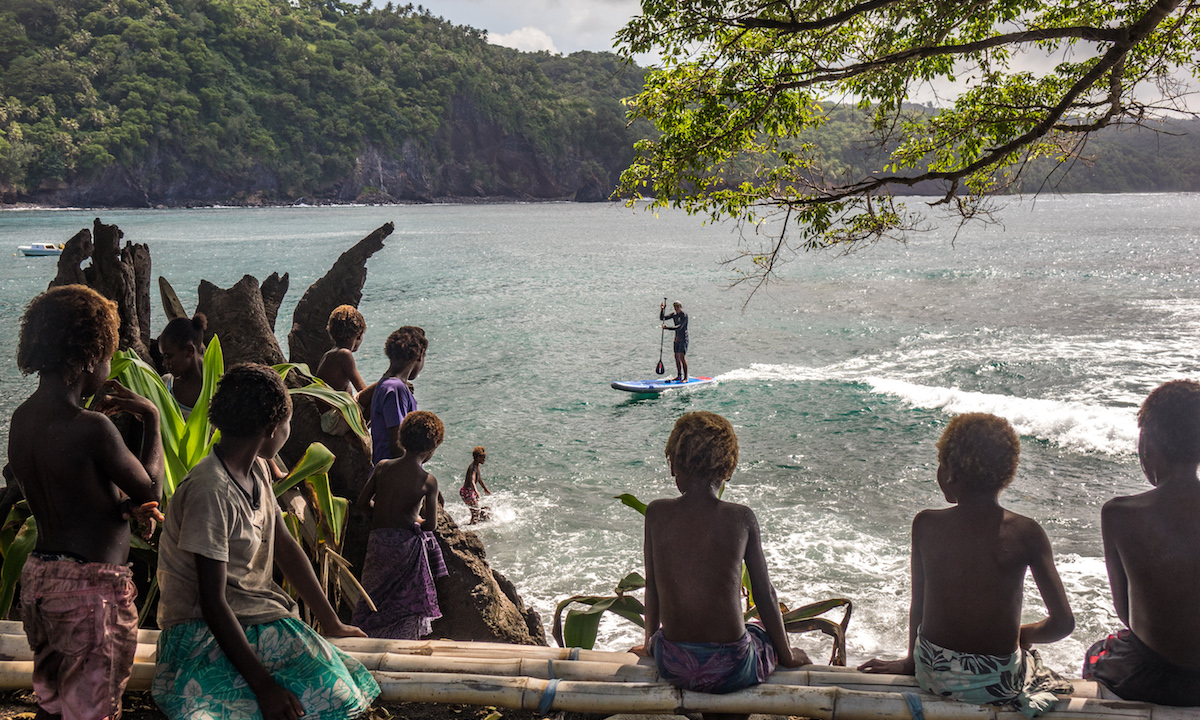Vanuatu - A Journey Back in Time
- Written by Bart de Zwart
- Published in Journeys
- Comments::DISQUS_COMMENTS
All photos taken by Bart de Zwart and Trevor Tunnington
Another loud explosion, we looked at each other with a mix of excitement and worry. It made us wonder what we would see up there. We were walking towards Mt. Yasur on Tanna, one of the few very active volcanoes which was considered ‘kind of’ safe to view up close. It was still a two-hour walk, but the noises this volcano made, were already loud and frightening.
While we were walking, I thought of how we got here: I sailed the islands of Vanautu in 2007 with my wife and daughter and we had very fond memories of the people, nature, and the culture. So, the expectations were high. But what we found, made us fall in love with the people and gave us a rare insight view of their unique way of life.
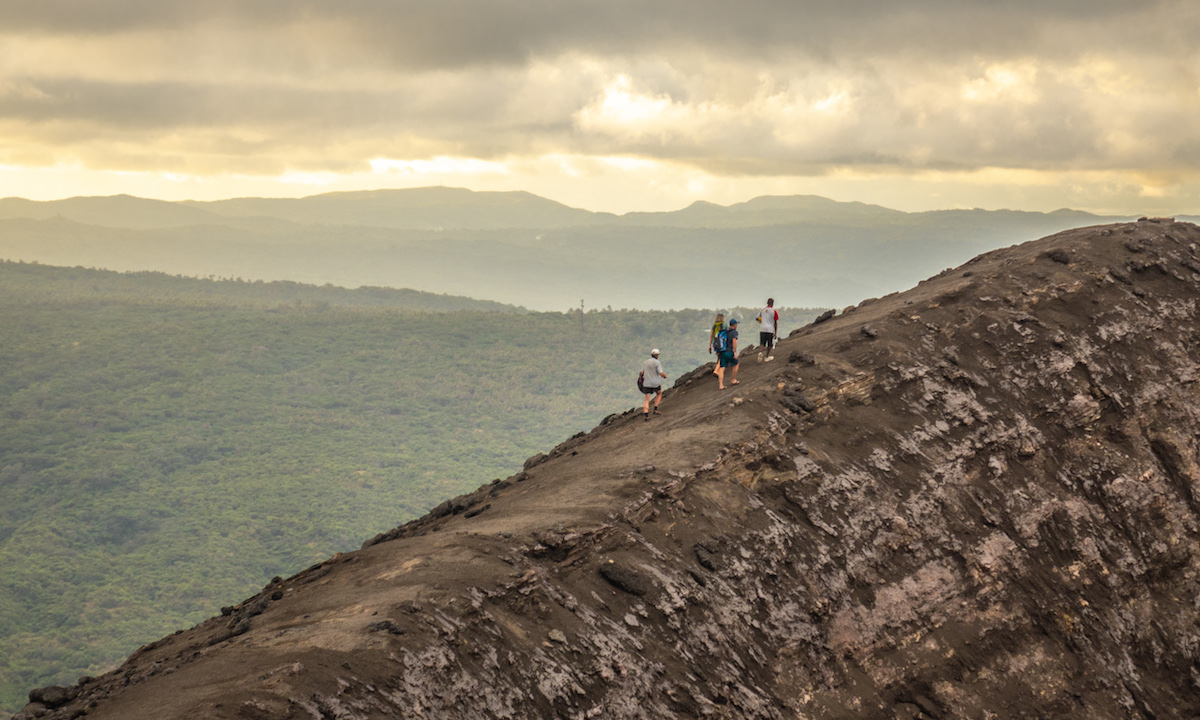 |
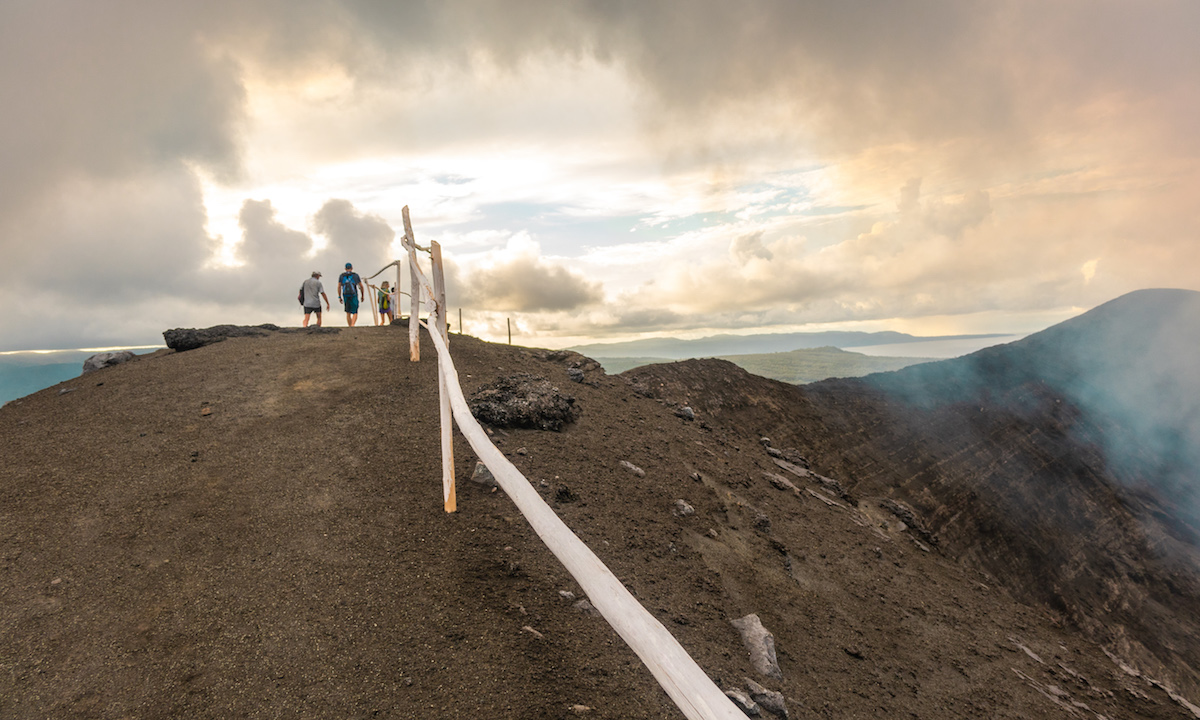 |
Hiking up the ridge to the volcano.
For this SUP expedition, I had asked my Starboard team mate, Trevor Tunnington to come along. He didn’t need much convincing and was immediately on board. “A SUP expedition, to one of the most friendly but also most dangerous nations (in terms of national disasters) on earth, what is there not to like”, Trevor answered the same day.
We would travel light with two Starboard inflatables (Touring 14’ x 30” and IGO 11’2 x 32”), 3-piece paddles, a tent, sleeping mat, basic navigation gear and just an emergency ration of food and two water bags. The IGO has a double chamber which brings extra safety for crossing when we are far at sea.
Vanuatu consists of 13 main islands and many small ones, an ideal place to paddle and explore on stand up paddle boards. Apart from the main island, it is remote, so remote that many villages rarely see tourists. Vanuatu is one of the least visited countries in the world. After a short flight on a tiny plane, while looking over the shoulder of the pilots, we had landed in Tanna. We found a 4x4, who was willing to take us to Port Resolution, a village on the other side of the island, 2 hours over a muddy, barely doable, road.
It is custom in every village in Vanautu to go first to the village chief and ask for his permission to visit and stay in the village. Normally you always arrive with a gift, so did we. We had brought T-shirts, lycras and hats, which were very much appreciated. After we talked to the chief, he gave us permission and a great spot to put up our tent on a cliff overlooking the bay. Before we started our long walk to the volcano Mt Yasur, we had a swim at the deserted white coral sand beach on the other side of the village. Tiki life feeling…
 |
 |
Looking down into an active volcano.
Hiking up the slopes of the mountain, the thunder-like explosions got louder and louder, soon we found ourselves in front of the entrance of the volcano. After a brief ceremony and some instructions not to jump over the crater’s edge, we went to the rim. A light sulphur smell greeted us when we got close to the edge. Then, we saw smoke and deep down, the lava boiling on the bottom of the crater.
We were standing there watching this spectacle when suddenly we got hit by a pressure wave from a loud explosion which threw up the lava hundreds of meters in the air, a lot higher than we were standing. The first reaction of our little group of people, was to duck down and run for cover. This was so freaking awesome and thrilling at the same time. We stayed on the rim and while it got dark and the lava explosions kept coming every 5 minutes or so, with the diminishing light the spectacle got even more impressive. After a few hours we went down the volcano and luckily got a ride on a 4x4 back to our tent which saved us the 2.5 hour walk.
The next morning we blew up our boards and paddled for a few hours to the next village, Ipikel. On the way, we came across, something straight out of a scene out of the BBC Planet Earth series, a shark feeding frenzy. About five sharks were hunting a school of tunas out at sea. We saw water splashing and fins coming out of the water. We went for a closer look, until we were right in it. A few sharks were pushing them close together and the others were happily biting at any tuna coming their way.
I pushed my camera underwater, hoping that the sharks would not mistake it for a tuna. We continued our paddle along the coast to Ipikel. When we got closer, someone was waving and guiding us to a safe landing spot through the beach break, and it turned out to be chief William. A crowd gathered quickly around us as we pulled our boards and gear on the beach. They were as excited to see us, as we them.
If there is one thing you take away from traveling in Vanuatu it is the way the Vanuatu people live. The contrast to the way the western world lives couldn’t be more different. Chief William and his adopted son also called William showed us around and explained a lot of their culture. In the village they don’t use money. They grow everything they need on their land, use natural building materials and manage to have a culture without money, only trading if needed. They have a lot of time for each other and themselves. No one is in a hurry or has stress and everyone is friendly, helpful and looks very content. It is a simple but also rewarding and happy life.
That evening we were invited to drink Kava with the men of the village. It is a ceremony they do almost every night in a special area in the village where only the men come. The way they make the kava is also very ‘special’. They take a mouth full of kava root, chew on it for about 15 minutes. Then, with a lot of noise, they jiggle it from the back of their throat and spit it out on a leaf, so do the rest of the men. Then they put a little of the gathered mash in a piece of cloth, pour water over it and fringe out the cloth in a coconut shell. The leftover, is a yellow milky liquid which is highly sedative. I drank only a little, which immediately numbed my lips and mouth. Trevor drank the entire bowl and seemed to enjoy the feeling, me, on the other hand, not so much.
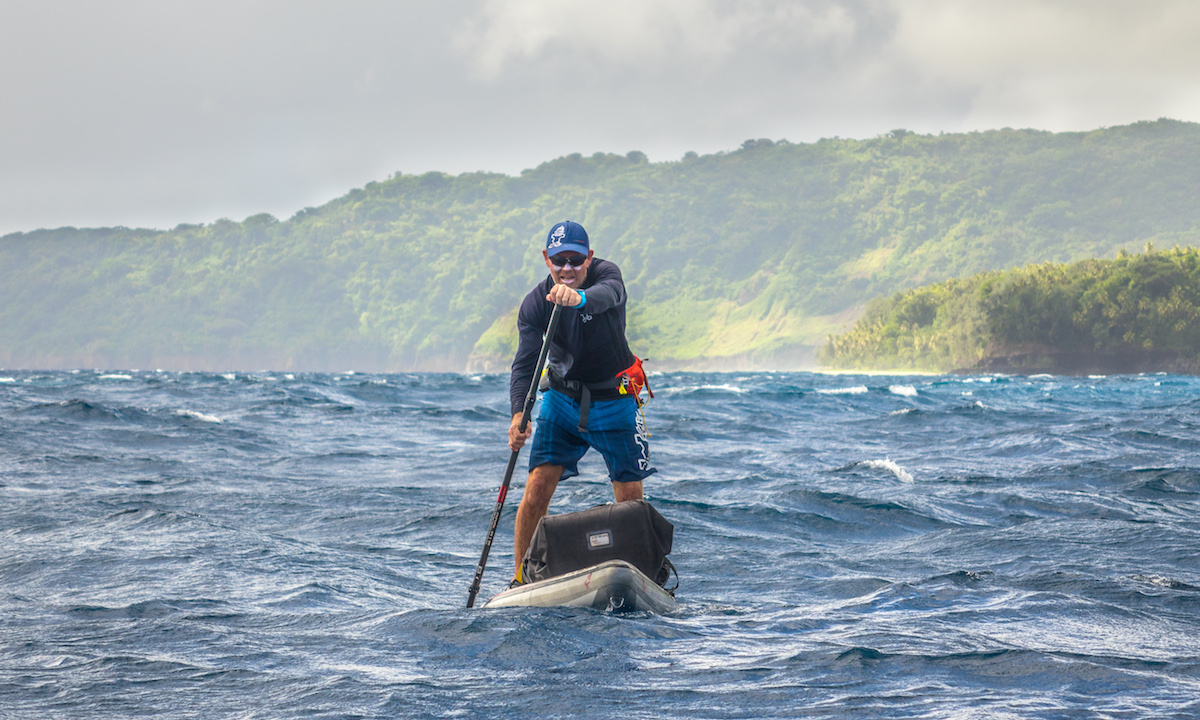 Bart de Zwart catching bumps.
Bart de Zwart catching bumps.
The following day we were woken up by the pigs running around our tent, which we had put up right in front of the chief’s hut. After a fried fish for breakfast the chief just caught that morning, we took off and had a great downwinder to Waisisi. Again, the same arrival scene. At first, one of the villagers looked bewildered when they first saw us and then curious, they all came out with the chief in front to see what just arrived.
The chief “John” was very friendly and showed us a great place to put up our tent. He told us that most of the bay was ‘Tabu’, forbidden to go swim and fish. This is a ritual, the chiefs hold every year to give the fish in the bay time to lay their eggs. The chiefs of all the surrounding villages sit in a hut on the beach discussing all day for days on end. Nobody knows exactly when the Tabu is over and everyone can go fish again. The villagers told us it is mostly a couple of weeks before the chiefs decide with a ceremony that fishing season is on again.
However, all the kids in the village and we too, were allowed to swim on the side of the bay where the waves broke on the reef. We decided it was a good idea to take the kids out on our stand up boards. It turned out to be a highlight for them as well as for us. The whole village went wild when one of them tried to paddle the waves and fell off. Everyone was laughing. Not in a mean but rather joyful way.
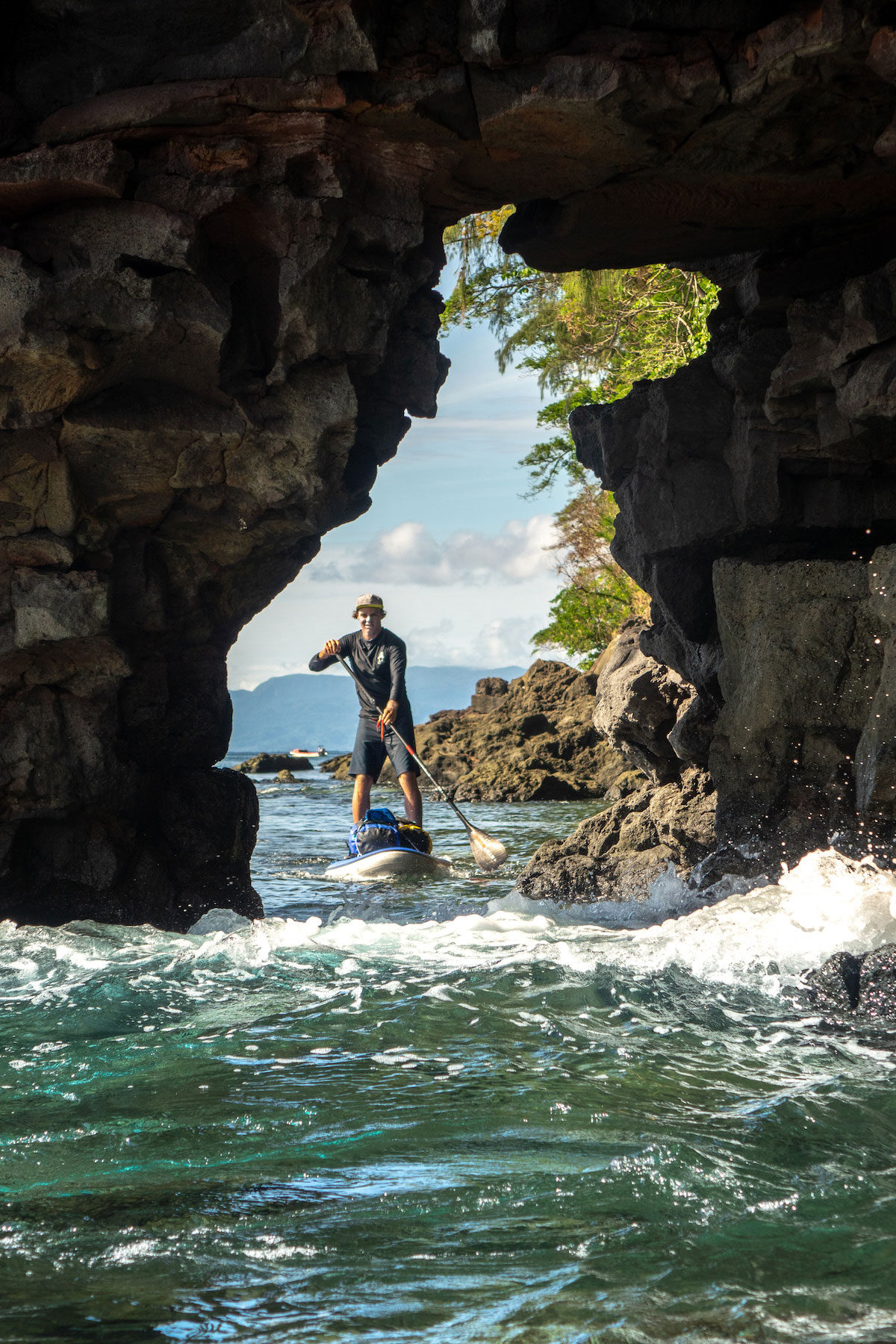 In the afternoon, some of the kids asked us if we liked to get coconuts. We walked up into the jungle and a few of the kids climbed up the 50ft tall palm trees, barefoot, like monkeys, no fear and lots of skill. We got even more respect for their skills a couple of days later, when we tried climbing the palms ourselves but failed miserably. The kids here walk to school for about 1.5 hours each way every day. And again, nobody seemed to complain, rather the opposite, they all seem genuinely happy. Our last night on Tanna we shared a meal with the chief and his wife, on the ground as is custom.
In the afternoon, some of the kids asked us if we liked to get coconuts. We walked up into the jungle and a few of the kids climbed up the 50ft tall palm trees, barefoot, like monkeys, no fear and lots of skill. We got even more respect for their skills a couple of days later, when we tried climbing the palms ourselves but failed miserably. The kids here walk to school for about 1.5 hours each way every day. And again, nobody seemed to complain, rather the opposite, they all seem genuinely happy. Our last night on Tanna we shared a meal with the chief and his wife, on the ground as is custom.
The second part of our trip we flew to Ambrym. Our 12-passenger plane landed on a tiny grass airstrip. A short walk through the forest brought us to the volcanic lava rock beach where we blew up our boards. Ambrym is another volcanic island but recently after flowing for 10 years the lava flow stopped. But, it is still rumbling underneath the surface.
Apart from the constant threat of the volcano, the inhabitants endure frequent earthquakes and only five years ago a CAT 5 Cyclone destroyed everything. Although some residents have rebuilt with concrete blocks most just went in the forest and built their huts back in a short time. I had just read that now we are using 1.7 times yearly what the earth is capable of restoring. In Vanuatu, clearly most people don’t take more from the earth than it gives. And because they only use natural resources directly from their backyard, they don’t have any waste or garbage. We didn’t see any plastic or waste other than what arrives from their plastic consuming, far neighbors, like China or the Philippines. Most islands and villages have no electricity but there are a few cell phone towers. We did see more and more huts with a small solar panel for one light at night or to charge a phone. They use rain or river water to drink and cook.
After spending a night on a deserted beach along the coast we woke up realizing that one of our full water bags had a leak and is now empty, leaving us without water. The temperatures and humidity in Vanuatu are high and so is our usage of water. After a couple of hours paddling we explore land where I saw a river on the map. Unfortunately, the river was dried out and we had to continue to the next village with a bigger river to find water. By the time we got there we were very thirsty. But everywhere we went people are genuinely friendly and try to help us, sometimes because they feel for us coming from the water on our SUP boards which is something they have never seen before and mostly called a kayak. An older woman sitting under a tree in a small village gave us water and felt we also need some bananas. We eagerly bite into the fruit and fill up our stomach with water, life can be so simple.
That evening we camped near a village on the North East point of Ambrym after permission from the local chief. We got some fruits for dinner and paddled with some kids in the waves. At some point, Trevor came racing in to the beach. For a moment, Trevor thought he saw a saltwater crocodile, which do roam the northern part of Vanuatu, and are very dangerous but this turned out to be a Dugong, a large friendly sea grass eating mammal.
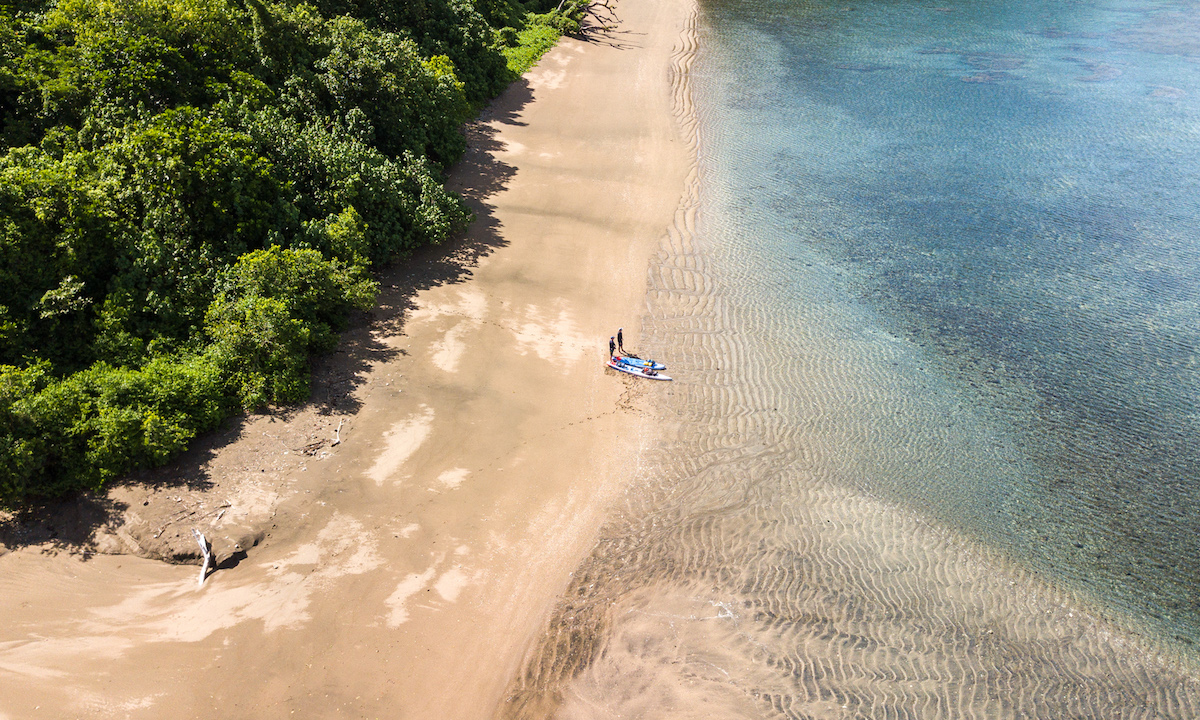 |
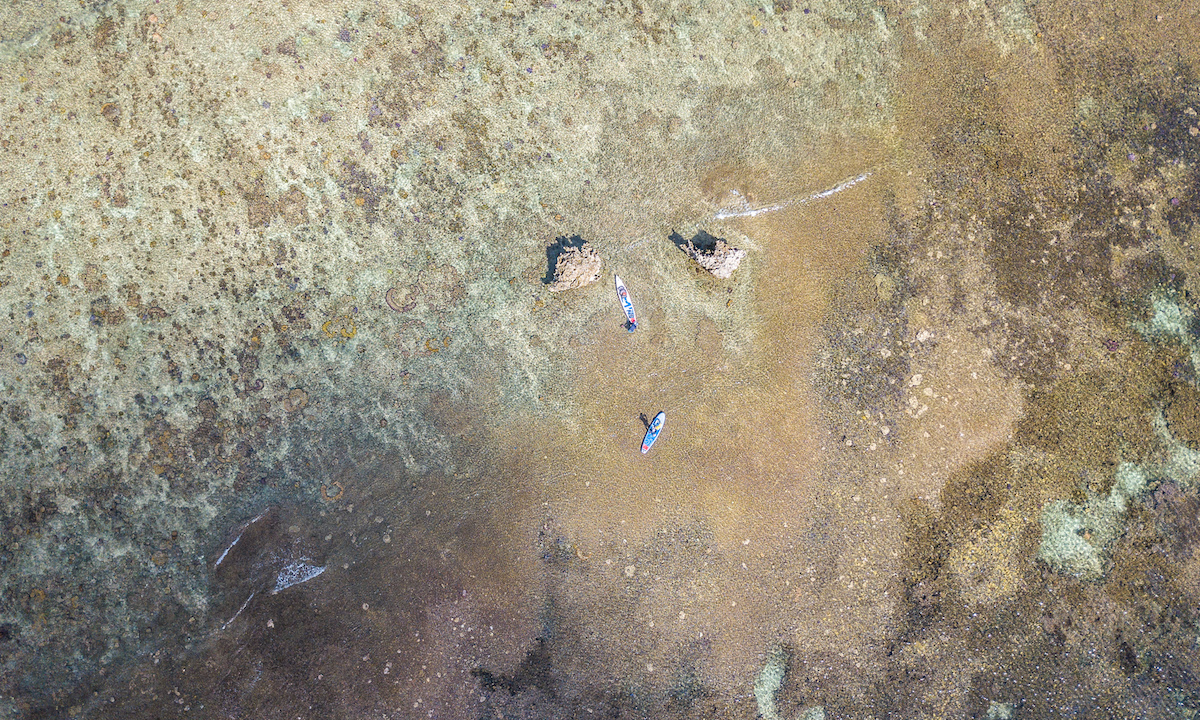 |
 |
 |
The following morning, we made the crossing to the next island, Pentecoste. Only in the Southern part of these islands, they practice something which became very famous with thrill seekers all over the world. This is where bungee jumping comes from. Every May and June, since as long as locals can remember, young men get a chance to prove their bravery. Instead of bungee, here they use vines out of the forest and the tower they jump from is built from small trees. This makes the whole tower very flexible and is one reason why most jumpers survive the jump. Trevor and I talked to Samuel and many people in the next village we visited. Although they are very proud, they all admit, it is very scary to do.
During the hours we paddled between the villages, Trevor and I had many conversations about their way of life compared to ours. It seemed that the people on most islands live with another rhythm. They sit under the trees for hours and discuss life, love and death. Kids have a lot of time playing and they play without toys and love the water. Our kids in the western world could learn so much from them.
On these last two islands we can see that for some villages it is hard and complicated to keep the old ways and traditions. There are so many outer influences coming from; returning citizens who have worked in Australia and come home with some money, tourists, and smartphones some people have. Even in the most basic villages, with no electricity, no cars, no-money economy, there were always one or two phones owned the younger men and they all knew what Facebook was. It will be hard to stop Vanuatu from slowly changing and modernizing. The Chinese are buying up a lot of land which worries the locals and although most try to resist, some will break, go for the money and change their lives forever. I am just afraid it will not always change for the better.
Our last night we spent close to the ‘airport’. A tiny house next to the runway makes the whole airport. To get to the beach we ran over the runway back and forth. With only two flights a week, there was no risk. Just then, we found out that our flight to the main island is going to be four hours later, which would suck because we would miss our flight back home by 20 minutes. That would mean a 4-day delay for me.
Trevor’s mom back in Australia helps out and calls the head office and convinces Air Fiji to wait for us if we get there in time. In the morning, the plane passed by on its way up to other small islands before it returned on the way back to pick us, and a few other passengers, up. This gave us the chance to talk to the pilots. We told them that we would be super grateful if they could come on time or even come a little early so we could make our flights. And they did come early, a whole 30 minutes. We arrived 5 minutes before our official flight time. With a little run and help of the ground crew we got to our next flight and took off right away. Fastest connection ever!
In Fiji, before Trevor and I were going our separate ways home, we concluded that Vanuatu is a very special place. We saw some spectacular sites but what mostly touched us were the people. With no exception, young or old, chief or fisherman, rich or poor, every single person was friendly, kind and very generous with the little things they have. We can all learn a lot from them.
 Locals take advantage of the SUPs on hand.
Locals take advantage of the SUPs on hand.
For more from Bart de Zwart, click HERE.

Bart de Zwart
Maui, Hawaii - Bart De Zwart is arguably the most respected and accomplished navigational SUP paddler. He has traveled all around the world on his SUP and is a true waterman. De Zwart is one of the nicest guys you'll ever come across on the water and land and a true ambassador of SUP.
Website: sup-crossing.blogspot.com/ Email This email address is being protected from spambots. You need JavaScript enabled to view it.

